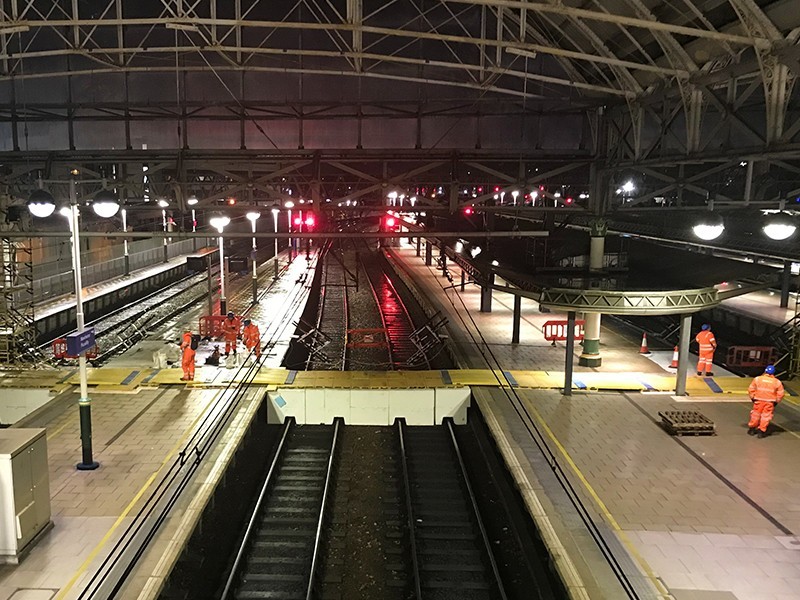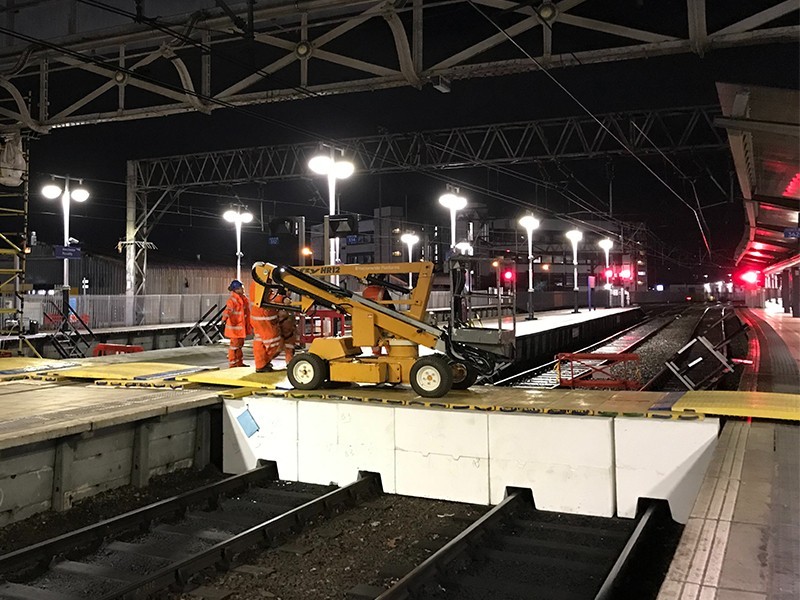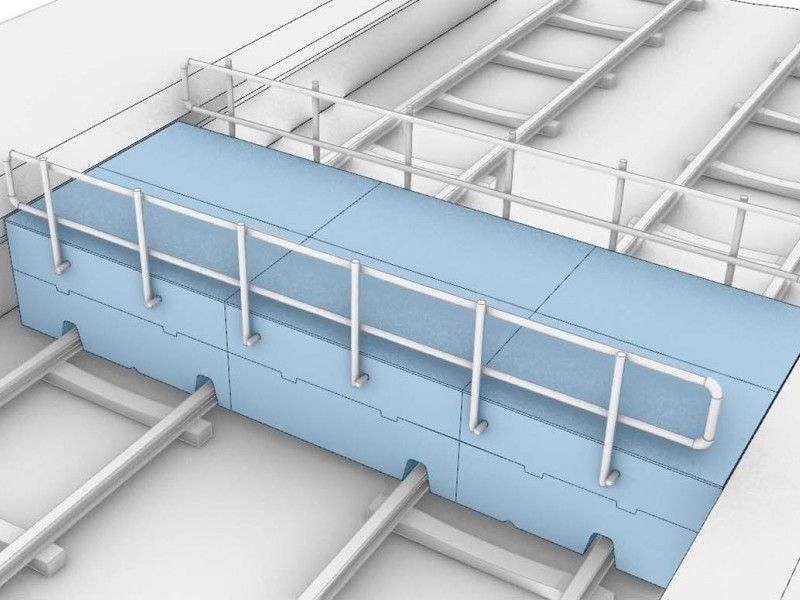When carrying out essential maintenance and refurbishment works at railway stations, there is often a need to create temporary crossings between platforms. These crossing locations are used to provide safe access between platforms for both plant and pedestrians, minimising the time to pass between them. Each platform crossing is designed to meet the unique requirements of the station, including specific platform heights, spans, loading requirements and rail configurations.
Features
- Lightweight, quick and easy to install / remove / store
- Individually designed to suit platform heights and spans
- Robust construction comprising Filcor with a plywood deck (upper surface)
- Designed to suit station specific rail dimensions and configurations
The grade of Filcor (Expanded Polystyrene) used to manufacture each platform crossing can be varied to suit the loading requirements expected from pedestrians, plant and materials during its use.
The crossings are manufactured from a lightweight Filcor making them quick to position, remove and store during the on-going works.
Applications
Platform Crossings are designed to be a cost effective, temporary solution for providing access between rail station platforms during maintenance and refurbishment works.
Suitability
Please contact the Cordek Project Design Team on T: 01403 799600 / projectdesign@cordek.com for further assistance when determining the suitability of this temporary crossing system.
Environmental facts about Filcor EPS

The manufacture of Filcor is a low pollution process. Steam is he key component and the water is re-used many times. There is no waste in the process as all cut offs or rejects are recycled.

Filcor is 98% air. This makes Filcor a uniquely resource-efficient material with small carbon footprint.

Filcor is HFC, CFC and HCFC free and Pentane is used as its blowing agent. Pentane has a low Global Warming Potential* (GWP) of less than five. (The EU does not register pentane as a substance hazardous to human health or environment.)

Styrene, used in the manufacture of Filcor, occurs naturally in many commonplace items including strawberries, beans, nuts, beer, wine, coffee beans and cinnamon
Filcor is 100% recyclable. As a single polymer, Filcor is straightforward to recycle and is recyled into items such as replacement hardwood decking or garden furniture and coat hangers
.jpg?v=1669292955)
.jpg?v=1669292965)
.jpg?v=1669292996)
User Notice
To view our technical documents, we recommend using alternative internet browsers to Chrome (such as Microsoft Edge, Internet Explorer, or Firefox) whilst Google rectify their Chrome browser and PDF document compatibility issue. We apologise for any inconvenience caused.



